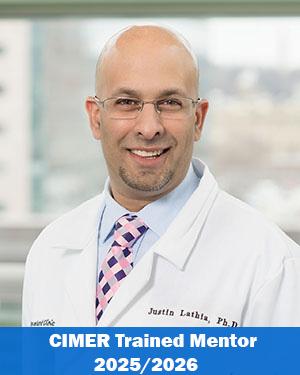Research News
03/03/2023
Interrupting cancer stem cell renewal promising in combatting glioblastoma
Targeting the protein WRD5 could break down the functions of cancer stem cells that allow them to resist treatment.

Above: Glioblastoma organoids treated with the WDR5 inhibitor, showing dramatic loss of proliferating cells including stem cells, and overall decrease in cancer growth (Photo courtesy of: Christopher Hubert, PhD)
Researchers at Cleveland Clinic are finding more effective treatments for glioblastoma, the most common type of malignant brain tumor found in adults for which no cure currently exists.
The research focuses on targeting cancer stem cells – a population of cells inside a tumor that repopulate indefinitely and are extremely treatment-resistant.
In a paper published in Genes & Development, the investigators identified the protein WRD5 as a promising way to turn off cancer “stemness” at a molecular level, clearing the way for treatment like chemotherapy to kill glioblastoma cells. Cancer stem cells, like regular stem cells, are able to inherently repair damaged DNA and divide into different cell types. Regular stem cells repopulate healthy tissue, but cancer stem cells repair tumors after cancer treatment.
“A drug targeting WRD5 would disrupt cancer stem cells’ epigenetic state – meaning the cells wouldn’t be able to grow or multiply in the way that helps them resist treatment,” says Justin Lathia, PhD, Cardiovascular & Metabolic Sciences and the Melvin H. Burkhardt Endowed Chair for Neuro-Oncology Clinical Research.
The study combined expertise in cancer stem cell biology and drug development, a collaboration between the Lathia Lab, Shaun Stauffer, PhD, Director of the Center for Therapeutics Discovery, and Christopher Hubert, PhD, formerly of Cardiovascular & Metabolic Sciences and now an Assistant Professor at the Case Comprehensive Cancer Center. Kelly Mitchell, PhD, a former post-doctoral fellow, is the first author on the study.
The study defined WRD5’s role by using organoids, three-dimensional tissue cultures used to study complex structures like tumors. When using organoids, researchers can look at how a certain drug affects the multiple types of cells that make up a tumor as opposed to conventional cell culture approaches. When existing drugs that inhibit WRD5 were introduced in preclinical models, the inhibitors disrupted cancer stem cell growth and self-renewal, preventing tumors from re-growing.
Targeting WRD5 – and other proteins associated with glioblastoma cancer stem cell survival – requires developing drugs that can breach the blood-brain barrier. The blood-brain barrier is an immune response that protects the brain from viruses or pathogens, acting as a gatekeeper between the bloodstream and the brain. Tumors in the brain can exploit this defense, making their own “blood-tumor” barriers and limiting therapeutics.
Dr. Stauffer’s lab specializes in small-molecule therapeutics development, using compounds and molecular features with low molecular weights to elude these gatekeepers and enter cells more easily. Now that WDR5 is known to elicit a vulnerability in glioblastoma stem cells, the challenge is designing a tool that can reach and kill the tumors, Dr. Stauffer says. To test the drugs, researchers can use a model of the inside of the skull that has intact blood-brain and blood-tumor barriers.
“We’re getting closer to the ‘holy grail’ of glioblastoma treatment – being able to navigate this response and then attack tumors without damaging any healthy cells in the brain,” Dr. Lathia says. “Luckily, having experts that can tackle this comprehensively is bringing us forward in addressing this problem.”
Featured Experts
News Category
Related News
Research areas
Want To Support Ground-Breaking Research at Cleveland Clinic?
Discover how you can help Cleveland Clinic save lives and continue to lead the transformation of healthcare.
Give to Cleveland Clinic
